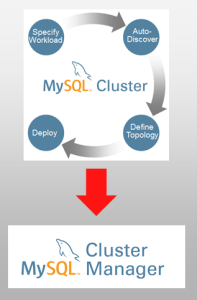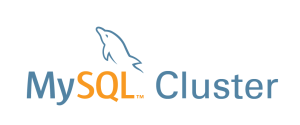
Thomas Nielsen and I recently presented a webinar explaining the latest developments in managing MySQL Cluster. In case you weren’t able to attend (or wanted to refresh your memory) then the webinar replay and charts are now available.
As a reminder, this webinar covered what’s new in MySQL Cluster Manager 1.3 which recently went GA.
By their very nature, clustered environments involve more efforts and resources to administer than standalone systems and this holds true for MySQL Cluster, the database designed for web-scale throughput with carrier-grade availability.
The MySQL Cluster Auto-Installer guides you through defining and running a well configured MySQL Cluster database – combining auto-discovery of platform resources with built-in best practices in an intuitive web-based GUI.
MySQL Cluster Manager (available as part of the commercial MySQL Cluster Carrier Grade Edition) simplifies the ongoing management of MySQL Cluster by automating common management tasks, delivering higher administration productivity and enhancing cluster agility. Tasks that used to take 46 commands can be reduced to just one! These tasks include configuration, starting & stopping the cluster, upgrades and backup/restore and new for MCM 1.3, import a running Cluster.
These webinars are always a good opportunity to get your questions answered; here’s a catch up of the Q&A from this session:
- One of the biggest problems I am faced with is that many common applications heavily rely on the InnoDB or MyISAM – storage engines.So I am concerned about different behaviors of them compared to the NDB.This is something that we’ve been working to address – for example, JOINs in MySQL are now a lot faster and MySQL Cluster now supports Foreign Keys.
- What about transaction – Handling, Locking mechanisms, or even changes in supported statements which are related to instance – managment rather then being part of DDL, DML, or DQL? Yes, MySQL Cluster (NDB) is slightly different in these respects, mostly due to its real-time heritage and distributed nature.
- Is the MySQL – Cluster auto-installer restricted to specific operating system distributions or versions? No, the auto-installer works on all platforms supported by MySQL Cluster
- I hope there will be a white paper about the differences as this is the major reason why I am not changing to NDB right now after I changed from many – databases-in-one-instance to a one-database-per-instance approeach. There are a couple of resources available today: Reference Manual comparing InnoDB and MySQL Cluster and the MySQL Cluster Evaluation Guide
- In the creation of the site in MySQL Cluster Manager can hosts be specified using the IPv6 addresses or it’s IPv4-based only? At the moment, MCM only supports IPv4 addresses.
- Are performance criteria for the restoring of nodes in a cluster available? I’m not aware of performance benchmarks for a database restore but they’re fairly fast as they happen at the data node level (and so for example there’s no need to go through SQL). You can also configure high degrees of parallelism for the restore so that many records are restored at once.

